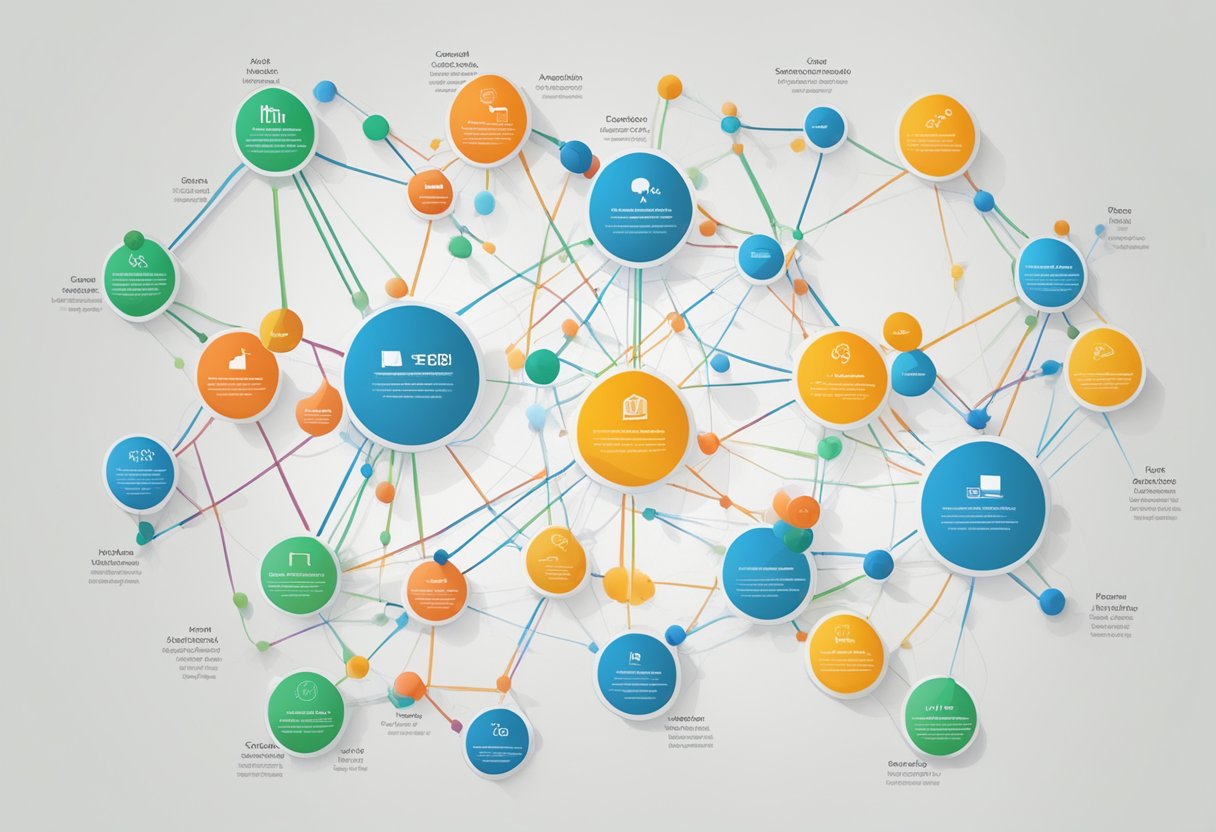Everything You Need To Know To Create Topic Clusters For SEO: A Comprehensive Guide
In the ever-evolving world of SEO, topic clusters have become an effective strategy to enhance organic traffic and boost search engine rankings. By grouping relevant content that covers a single core topic in detail, topic clusters establish a website as an authority in its industry. The pillar page serves as the backbone of this strategy, tying together all of the related content pieces and driving optimization through careful use of keywords and interlinking.
Keyword research is an integral component of creating topic clusters, as finding the perfect balance of search volume and user intent is essential to crafting content that resonates with the target audience. Utilizing powerful tools like Ahrefs can unveil valuable insights into commonly searched terms and queries, and analyzing the SERPs helps marketers understand the relevance and context that Google’s algorithms are searching for.
Implementing a comprehensive content marketing strategy with the aid of topic clusters not only fosters credibility and trust with users but also generates a seamless user experience by catering to their search intent. By following the best practices for interlinking, site architecture, and quality content creation, marketers can boost their brand’s E-A-T (Expertise, Authoritativeness, Trustworthiness) score, rank higher on SERPs, and increase website traffic and conversions.
Understanding Topic Clusters and Its Importance
Topic clusters are an innovative SEO strategy that involves organizing your content around a central theme, usually focused on a specific industry or subject matter. By creating a network of interlinked content, topic clusters help establish your expertise and relevance in a particular field, thus improving your website’s credibility and user experience.
The main idea behind topic clusters is to build your site’s authority by grouping related content together. This can be achieved through a pillar page that provides a comprehensive overview of a topic and links to cluster pages which cover associated subtopics in greater detail. This linking structure allows search engines to better understand the context and relationship between your content, ultimately improving your site’s ability to rank higher in search results.
- Use a pillar page as the focal point for the main theme
- Create interlinked cluster pages for related subtopics
Implementing a topic cluster strategy has several benefits:
- Improved SEO: Search engines value websites that demonstrate expertise and cover a subject comprehensively. Topic clusters help search engines see your site as an authority on a specific subject, which can lead to better rankings.
- Increased relevance: By focusing on a central theme, your content becomes more relevant to your audience, allowing you to better meet their needs and expectations.
- Enhanced user experience: A well-organized site with interlinked content provides a better user experience, making it easier for visitors to find and explore related material.
- Competitive advantage: As more businesses embrace topic clusters, staying ahead of competitors requires adopting this strategy and constantly improving your content.
There is no one-size-fits-all approach to creating topic clusters, as the approach may vary depending on your industry and audience needs. However, it is vital to understand the importance of topic clusters as they can significantly improve your site’s SEO and make your content more accessible to search engines and visitors. By investing time and effort in building topic clusters, you can establish your website as an industry leader and foster a strong, loyal audience.
How To Create Effective Topic Clusters
Keyword Research and User Intent
Start by conducting keyword research to identify a core topic and long-tail keywords related to your target audience’s interests and search intent. Use keyword research tools like Ahrefs and Semrush to determine search volume and competition. Understanding user intent helps create content that effectively addresses their needs and thus improves organic traffic and conversions.
Pillar Content and Supporting Subtopics
Develop a pillar page that provides a comprehensive overview of the core topic. This page should establish your domain’s authority on the subject, earning trust and credibility. Then, create detailed and comprehensive content for subtopics (known as cluster pages) related to your core topic. Ensure each piece of content addresses a specific query or aspect of the broader topic. Remember, the goal is to provide valuable information that caters to your audience and complements your pillar page.
Internal Linking and Site Architecture
Internal linking plays a crucial role in topic cluster creation. By interlinking the pillar page with cluster pages, you establish a clear site architecture that helps search engine bots understand the hierarchy and relationship between your content, ultimately improving your SERPs ranking. Additionally, well-structured internal links make it easier for readers to navigate your site and find relevant content, increasing engagement and strengthening your content marketing strategy.
Tracking and Improving Performance
Regularly audit your content’s performance using metrics such as website traffic, backlinks, and organic rankings. This will help you identify areas for improvement and adjust your content strategy accordingly. Examine your competitors’ content and always strive to provide quality content with better readability, updated information, and addressing user intent. Google’s focus on E-A-T (Expertise, Authority, and Trust) principles underlines the importance of offering valuable, relevant, and trustworthy content to boost your website’s search engine optimization.
By following these steps, you will create effective topic clusters that not only improve your SEO but also cater to the needs and expectations of your target audience.



